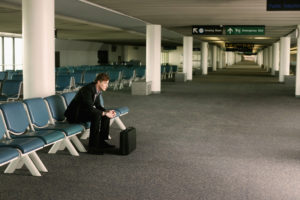Travel Tips: Do You Have To Pay More To Fly From A Hub Airport?
 Hub airports are obviously the busiest, and this is often by design. Some say they offer a more efficient method of air travel. Some even credit them with increased economic activity. Others believe they are a total rip-off. But ultimately, do you have to pay more to fly from a hub airport? This week’s travel tips involve getting to the bottom of hub airports.
Hub airports are obviously the busiest, and this is often by design. Some say they offer a more efficient method of air travel. Some even credit them with increased economic activity. Others believe they are a total rip-off. But ultimately, do you have to pay more to fly from a hub airport? This week’s travel tips involve getting to the bottom of hub airports.
In many cases, no. This may come as a surprise, but stick with us. After all, isn’t it cheaper to travel directly from one place to another without stopping at another location out of the way? For solo travelers, it certainly is. However, airlines operate for group travel, not individual. If they can’t get enough people on a flight, they actually lose money. And if they lose money, they won’t remain in business.
The only other option would be to inflate prices to compensate for the lack of passengers. This is why charter flights are so expensive. If you have fewer people to divide the cost of fuel, personnel and taxes among, the cost per person will have to increase to compensate. It makes more sense from this angle, right? Therefore, it’s usually a lot easier to get more passengers from one hub airport to another than from one regional to another.
Yes, it means that flights will often have to follow less direct routes. However, it also means more passengers per flight to help offset costs. True, flights from hub airports aren’t always packed. However, they are certainly much more likely to be than flights between regional airports. So, passengers help each other save money, everyone helps airlines save money, and we all get to our destination happy at the end of the day.
Of course, we said “many”, not “all”. The problem with consolidating flights at hubs is that demand also increases prices. With more people showing up for flights at the same airports (even unintentionally), comes the opportunity for airlines to raise their prices to match. Hubs also tend to be located in densely populated areas, which causes a natural increase in demand.
Also, some airlines are actually able to offer lower prices by offering direct flights between two popular routes. Southwest is a great example of this. They attempt to find destinations that are relatively close with a high demand for flight. Atlanta and Orlando are a perfectly paired example of this. Tourists enjoy flying to Orlando for vacations, and entrepreneurs fly to Atlanta for business. There’s a pretty consistent demand for flights between the two cities, and Southwest takes advantage of this. Even if a flight isn’t particularly full, the relatively short distance helps keep costs low. Unfortunately, there are only so many places that meet this criteria.
The cost of hub airports becomes even more complicated when travelling overseas, especially on continents like Europe. Take the idea of hub airports here and apply it to hubs in different countries. This means that airlines must comply with international regulations and taxes for each flight. While it may still be more profitable for them in the end, those costs will still get passed on to passengers. Granted, connecting flights are often a necessity anyways when traveling overseas, so determining whether or not this is due to a hub situation is a little more difficult.
While travel may be a little complicated in the air, we keep it simple on the ground. Our straightforward booking process is both simple and customizable, and we’ll always give you the exact price before confirming your reservation. We also serve all airports, hub or otherwise, in New York, Connecticut and the surrounding tri-state areas. To reserve your airport limousine pickup from KEE, give us a call today!
